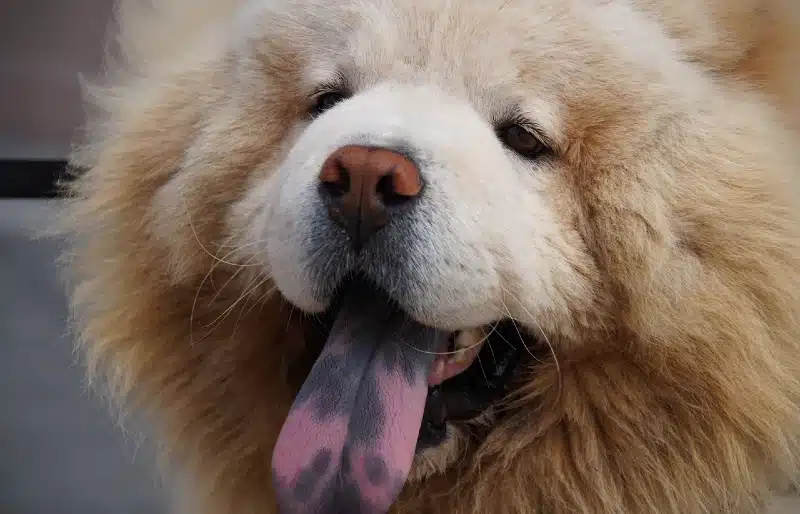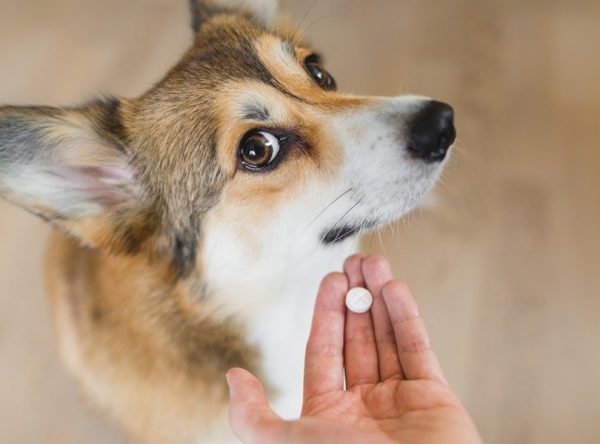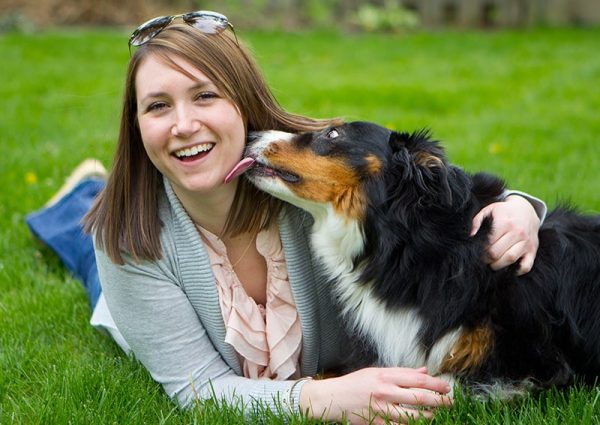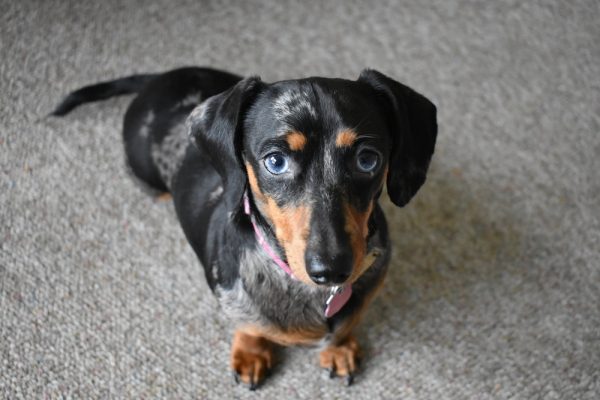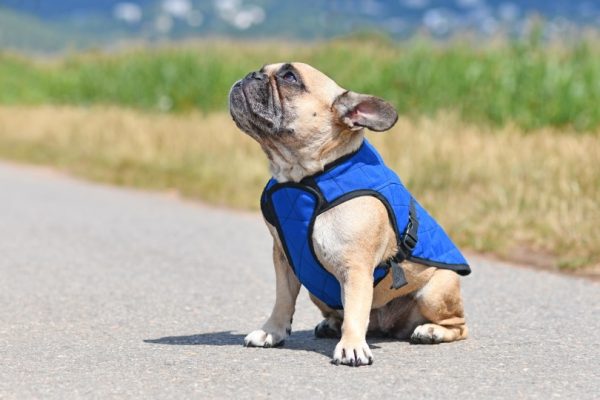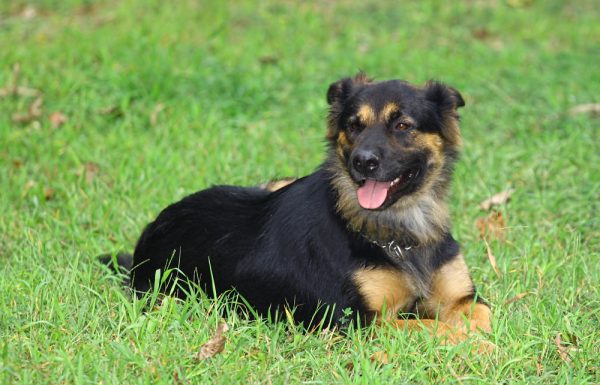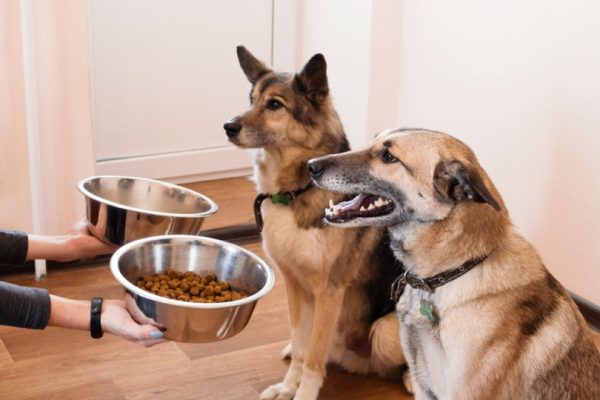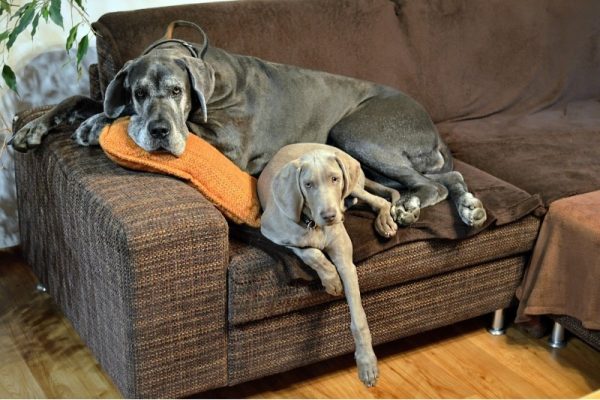Most dogs have pink tongues, some have black tongues, but only a few dog breeds have both colors on their tongue. Plus, most of the time, not every dog from these breeds has a spotted tongue. It may only show up in a small percentage.
Therefore, if you’re looking for a dog with a spotted tongue, you’ll probably end up looking for a while. That said, here is a list of dog breeds with spotted tongues to get you started:

The 15 Dog Breeds with Spotted Tongues
1. Chow Chow
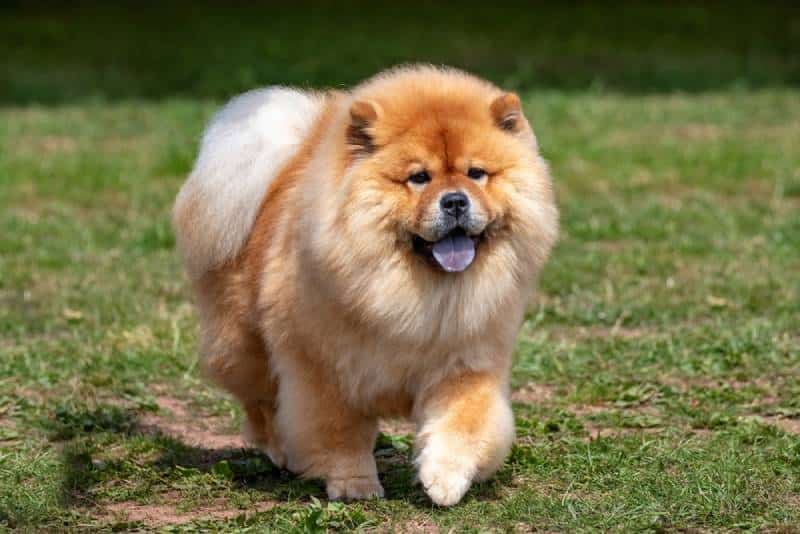
| Origin: | China |
| Lifespan: | 8–12 years |
| Height: | 17–20 inches |
Chow Chows have arguably one of the most famous colored tongues in the whole world of dog breeds. Their tongue tends to be more blue-black than the usual pink, but spotted tongues aren’t uncommon, either.
These dogs are also distinctive in other ways. For instance, they have a huge mane that makes them look much bigger than they actually are! Once, they were said to guard temples in China, but today, they’re mostly kept as companion animals.
They’re aloof with strangers, which makes sense, given their guarding tendencies. However, they’re very loyal to their families.
2. Shar-Pei
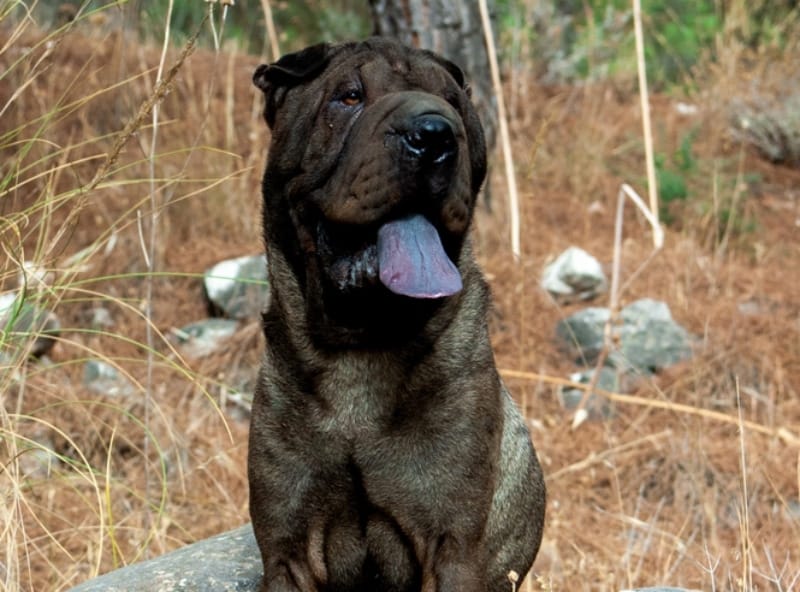
| Origin: | China |
| Lifespan: | 8–12 years |
| Height: | 18–20 inches |
Shar-Peis are best known for being very wrinkly. They’re one of the wrinkliest dog breeds around, which makes many people consider them rather cute. However, their wrinkles are prone to infections due to trapped moisture and bacteria. Owning one means keeping their skin folds clean, or you may end up with a very smelly dog.
They tend to be more active than you may think! However, they often do well in the city and suburbs. These dogs have a strong independent streak and can be aloof, so they’re not the easiest companions for a first-time dog owner.
3. Airedale Terrier
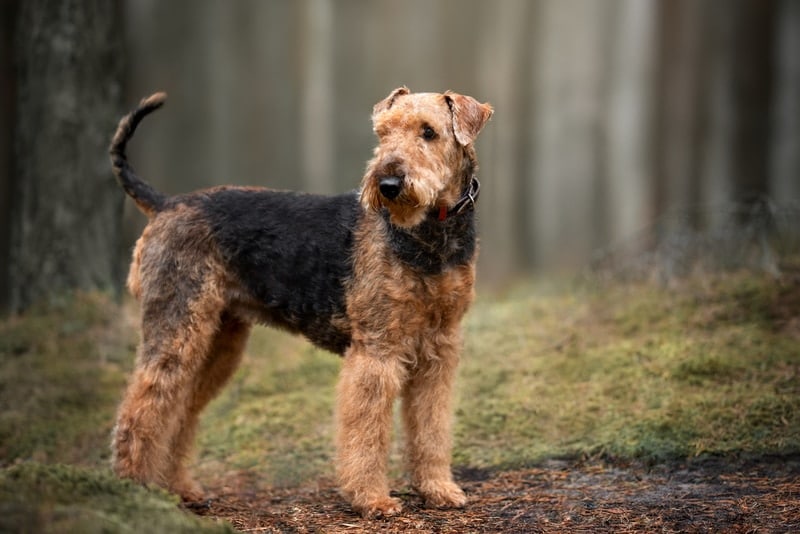
| Origin: | England |
| Lifespan: | 10 – 13 years |
| Height: | 22 – 24 inches |
Airedale terriers are the largest terriers around. They’re very athletic, like most terriers, and spend much of their time romping around. They don’t always have a spotted tongue, but there can be individuals within the breed that do.
We only recommend these dogs for very active families, as they need very vigorous exercise. They’re just like your average terrier but in a much larger body. These dogs are also very smart, so mental stimulation is essential.
4. Pomeranian
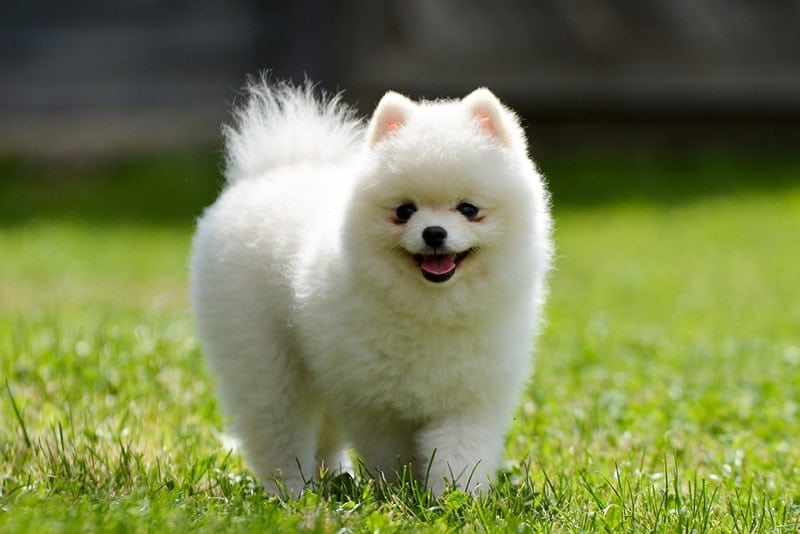
| Origin: | Germany |
| Lifespan: | 12–16 years |
| Height: | 6–7 inches |
Pomeranians may not be known for their spotted tongues, but some individuals do have slightly spotted tongues. These canines are known for being very animated. They’re full of personality despite their smaller size, which is one reason many dog owners adore them.
However, these dogs can also be a bit much. They check out every sight and sound, and they aren’t afraid to bark at the wind blowing by. Things can easily get out of hand, so proper socialization is vital.
Of course, training is also important. Otherwise, your Pomeranian may become possessive and territorial.
5. Dalmatian
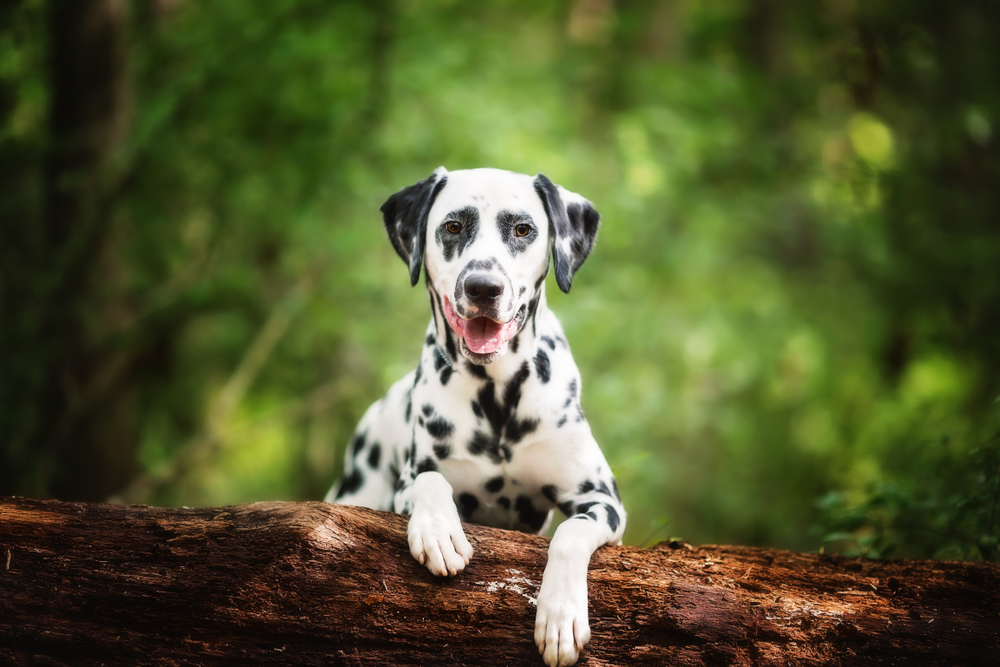
| Origin: | Croatia |
| Lifespan: | 11–13 years |
| Height: | 19–24 inches |
Thanks to the hit Disney movie, just about everyone knows what a Dalmatian is. However, most people don’t know that they can have spotted tongues on top of their spotted coats.
Unfortunately, Dalmatians haven’t been well-bred over the past couple of decades. The 101 Dalmatians movie saw a huge jump in popularity, which led many backyard breeders and puppy mills to jump on the Dalmatian train to make a few bucks. Therefore, there are many Dalmatians out there who have poor temperaments and plenty of health issues.
If you do decide to adopt a Dalmatian, be sure to adopt one from a quality breeder who does the proper health testing.
6. Akita
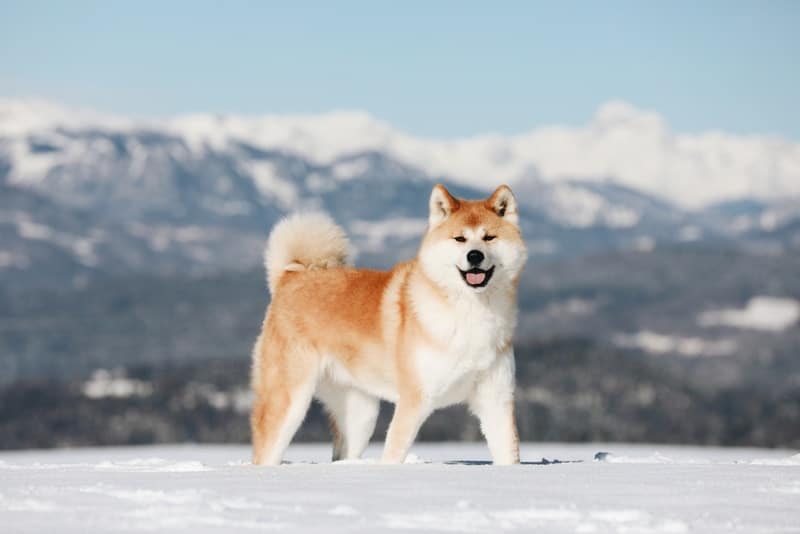
| Origin: | Japan |
| Lifespan: | 10–14 years |
| Height: | 24–28 inches |
Akitas are another Asian breed that commonly has a spotted tongue. While these dogs are slowly gaining in popularity, they have serious protective instincts. They must be properly socialized to ensure their guarding instincts remain under control. Otherwise, they can quickly become a bit too aggressive.
Even when properly socialized, Akitas are aloof with strangers. However, they bond closely with their humans. They’re independent and need an experienced handler.
Akitas are also exceptionally aggressive towards other dogs. They should never be left alone with a dog of the same gender, and they do best in single-dog households.
7. Bichon Frise
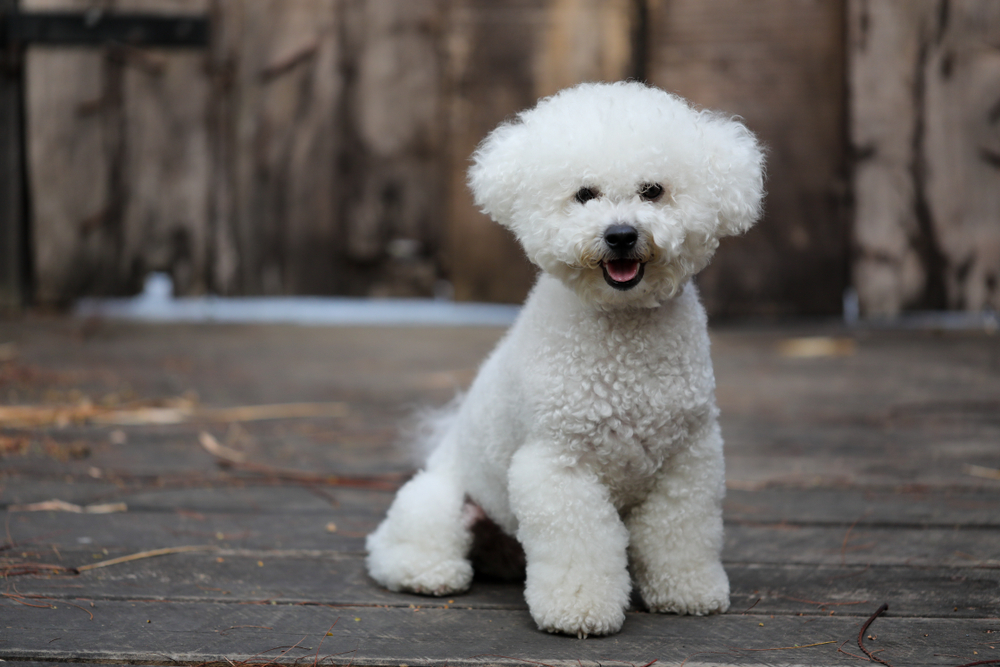
| Origin: | Spain |
| Lifespan: | 12–15 years |
| Height: | 9–11 inches |
Bichon Frises end up with spotted tongues more often than you may think for a dog with no coat pigment. These white dogs are exceptionally fluffy, and they tend to be a bit healthier than your average lap dog. They’re pretty easy to live with, as they tend to be very cheerful.
They do need some exercise, but not much. A daily walk or two each day is plenty for these smaller dogs when paired with some indoor playtime.
Bichon Frises are also very peaceful and calm with just about everyone. They get along well with other dogs and even cats, especially when well-socialized. It’s important to get them out and about at an early age, though, as some may be overly timid.
8. Collie
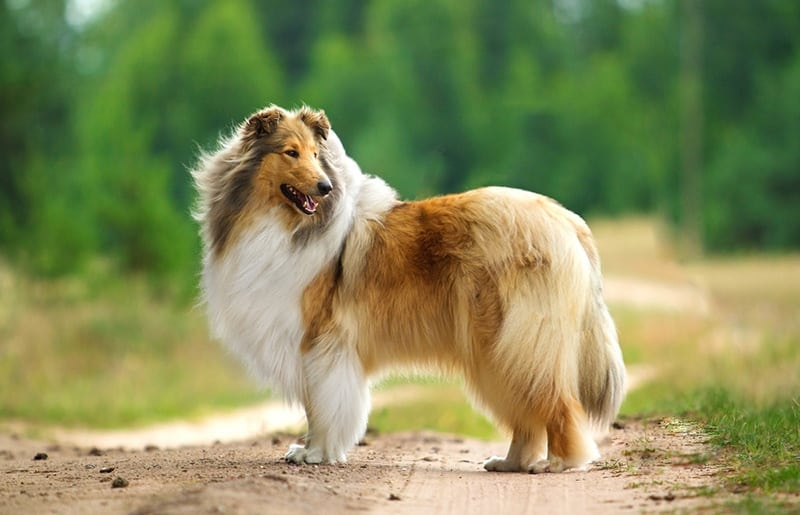
| Origin: | Scotland |
| Lifespan: | 12–14 years |
| Height: | 22–26 inches |
Collies can also occasionally have spotted tongues. We’re discussing the Scottish Collie here—not the Border Collie (which is more common). The Scottish Collie comes in two types: rough and smooth. The smooth collies have a short coat, while the rough collies have a longer one. Beyond that, these dogs are exceptionally similar to each other.
Originally, the Collie was an active working dog. However, these dogs are more likely to be pets these days, so owners should be sure to meet their moderately high exercise and mental stimulation requirements. Otherwise, they can become unhappy and destructive. They’re prone to chronic barking when bored.
9. Cocker Spaniel
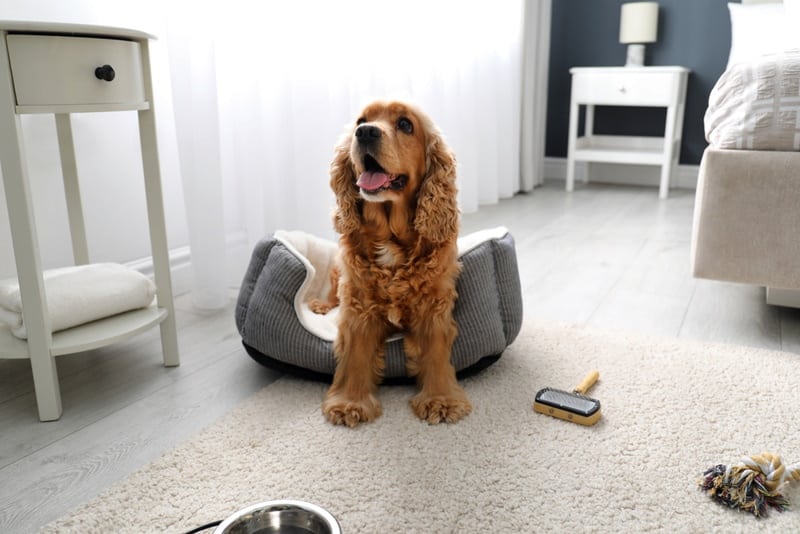
| Origin: | Spain |
| Lifespan: | 10–14 years |
| Height: | 13–15 inches |
Cocker Spaniels usually don’t have spotted tongues. However, there are some individuals that do.
When well-socialized, these dogs are very friendly and tend to get along with just about everyone. However, it’s very easy to under-socialize them, too. In this case, they can be timid and excessively submissive. Sometimes, these skittish dogs may defensively bite.
Many people love cocker spaniels because they’re affectionate. However, it’s also possible for them to be too affectionate. We highly recommend crate training them early to avoid excessive clinginess.
10. Doberman Pinscher
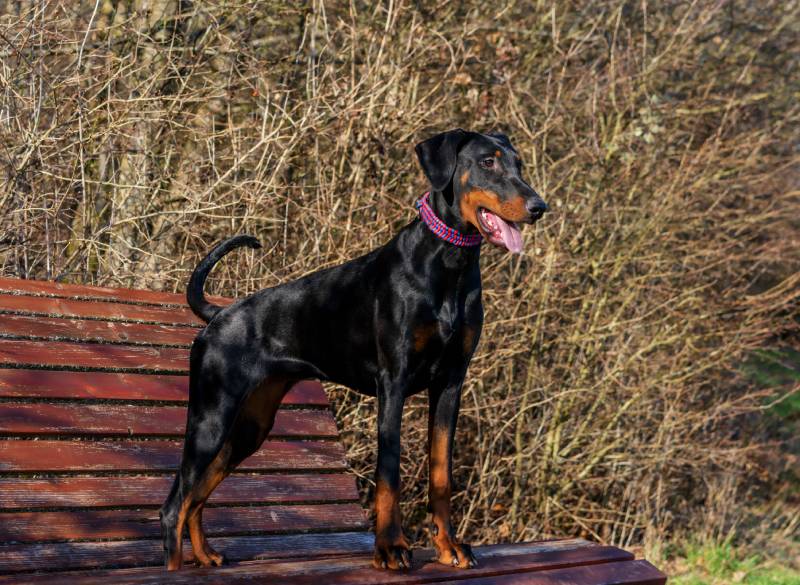
| Origin: | Germany |
| Lifespan: | 10–12 years |
| Height: | 24–28 inches |
Doberman Pinschers are exceptionally athletic dogs that need active owners. Their tongues are usually pink, but they may occasionally be spotted. These canines require brisk walking every day. If possible, all-out runs are recommended. Biking while your Doberman runs next to you is a solid option to help them stretch their legs.
Of course, mental exercise is just as important for this breed. They are very intelligent, so they need to do something—not just sit around your house all day.
When properly socialized, these dogs get along with people. However, many have some protective instincts, even when well-socialized early. Breeding plays a huge role in this. Dogs that are bred for pets or shows tend to be less protective than working-bred Dobermans. Know what you’re buying before you pick up your puppy.
Dobermans bred for guarding are not necessarily bad, but they do require different training and socializing than a pet-bred Doberman.
11. Great Pyrenees
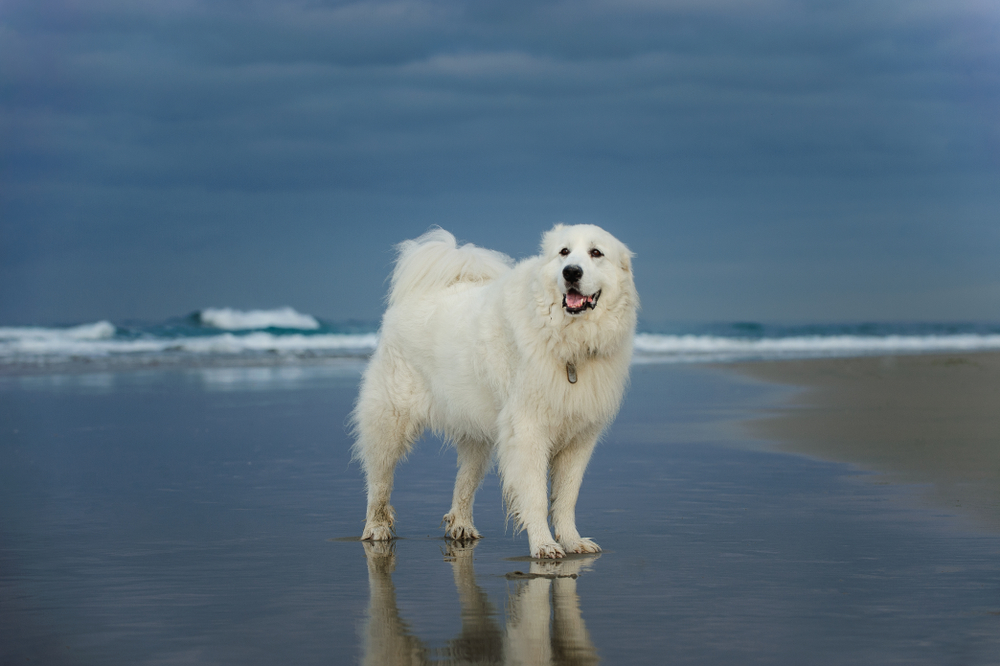
| Origin: | France |
| Lifespan: | 10–12 years |
| Height: | 25–32 inches |
Great Pyrenees often have spotted tongues. These dogs are typically bred for working purposes, mostly as livestock guardian dogs. Therefore, the vast majority of breeders are more worried about their guardian skills than whether or not their tongue is spotted.
While these dogs are very content indoors as adults, they do need a good walk every day, although they are not as active as other working breeds. If kept as a guardian dog, they will get much of their exercise outside with their charges. As guardian dogs, Great Pyrenees are pretty protective and aloof with strangers. Socialization is important, but it’s not as extensive as what is needed for many other protective breeds.
12. Rottweiler
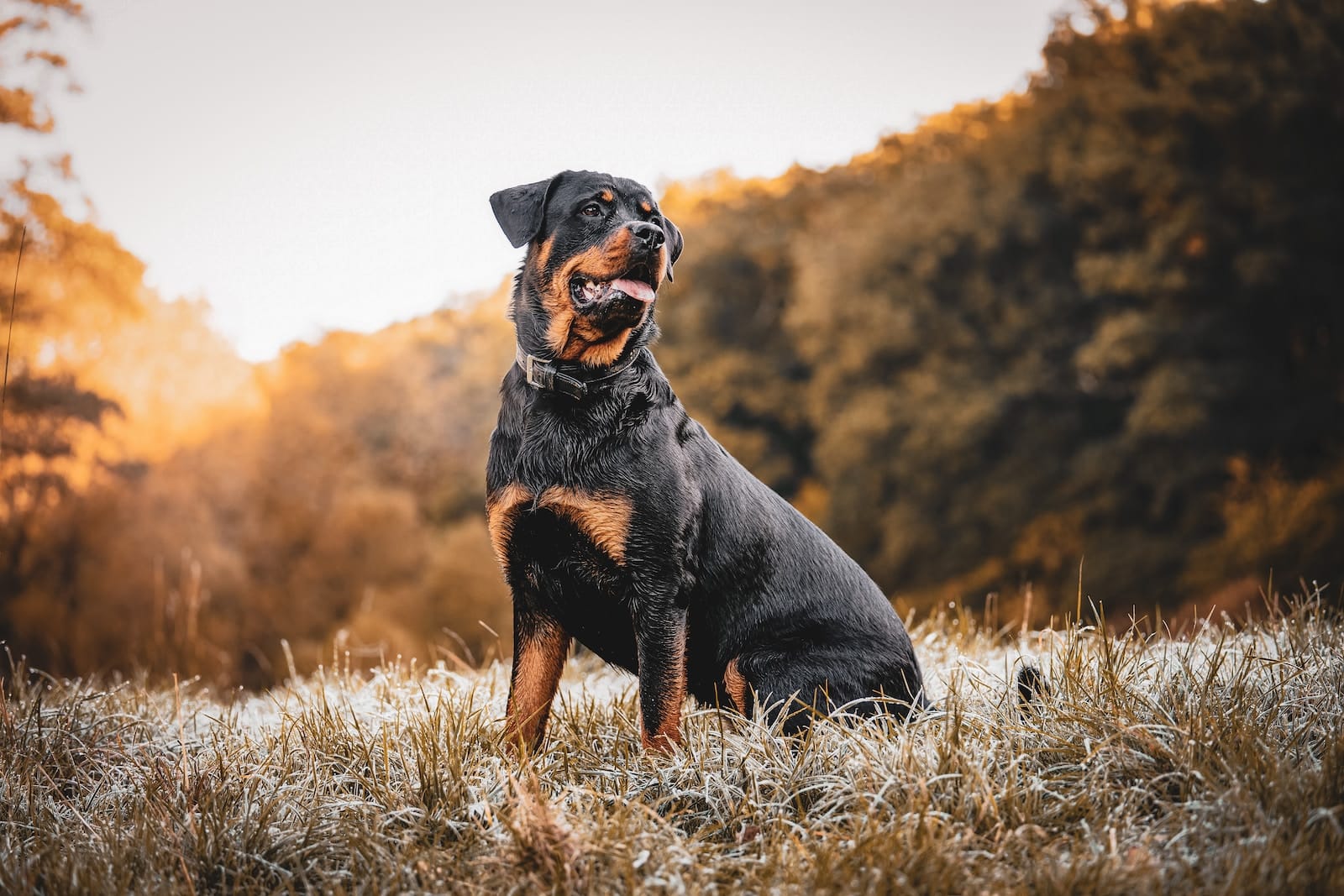
| Origin: | Germany |
| Lifespan: | 9–10 years |
| Height: | 22–27 inches |
Rottweilers are known for being big and stocky. However, they can also occasionally have a spotted tongue. Most of these dogs are rather serious, and they must be heavily socialized at an early age to prevent them from being too protective. They can be particularly aggressive towards other dogs.
These canines also need lots of daily exercise. Brisk walks and interactive romping sessions are required. If you’re not very active, a Rottweiler can easily become too much for you.
Training these dogs is absolutely required, as they can easily become dominant and “too much” otherwise. It’s best if you already have some experience training dogs. While Rotties aren’t hard to train, it’s important to make as few mistakes as possible.
13. Labrador Retriever
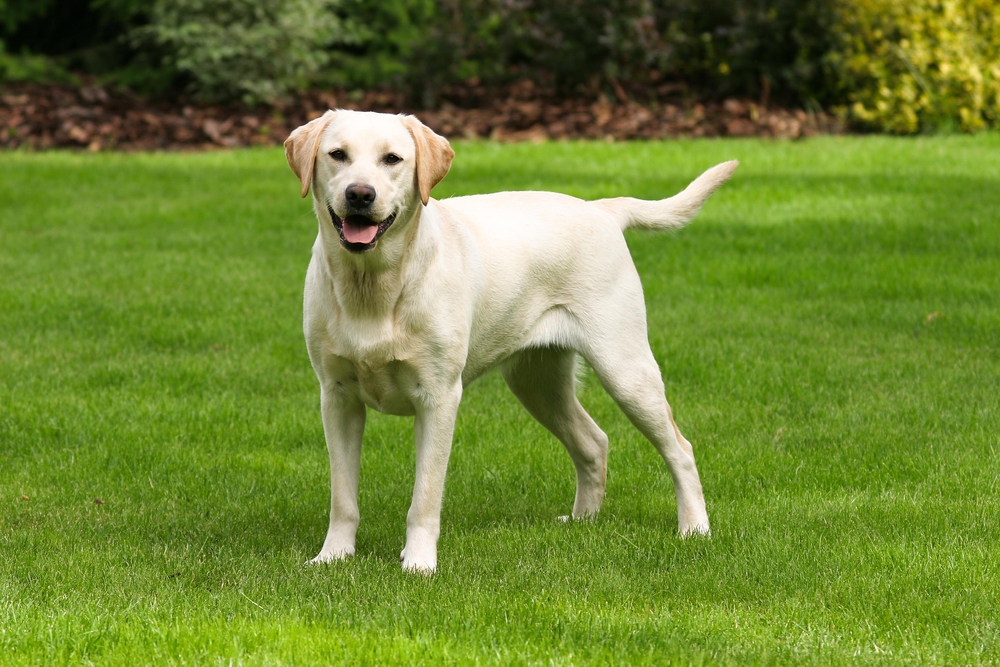
| Origin: | Canada |
| Lifespan: | 11–13 years |
| Height: | 21.5–24.5 inches |
Labradors are well-known by just about everyone. They were the most popular dog in the United States for a long time, though they were recently beaten by the French Bulldog. What most people don’t know is that these dogs can have spotted tongues, though it is not that common.
Labrador Retrievers were originally retrieving dogs. However, they’re now mostly kept as companion animals, and they make some of the best family pets you can own. Still, they have care needs just like any dog, including plenty of brisk walking and daily games of fetch. They do best in an active family, as they can be hyperactive and destructive if you don’t do enough with them.
This breed is good-natured and very friendly. They do well with children especially, and they don’t have strong guarding instincts. When properly bred, they aren’t prone to shyness, either. They’re simply very easy dogs to socialize, which is probably why they’re known for their great temperament.
14. Shiba Inu
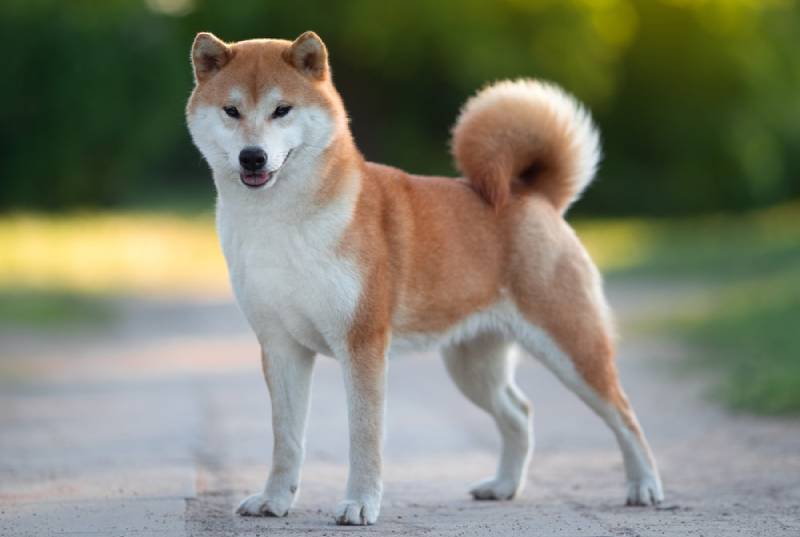
| Origin: | Japan |
| Lifespan: | 13–16 years |
| Height: | 13.5–16.5 inches |
Shiba Inus are an often-overlooked breed that’s hardy, clean, and easy to care for. In fact, they can be very good companion animals for the right family. However, they are also a lot of work. They’re not known for being good with children, other dogs, or strangers. They tend to run off due to their independent nature, high prey drive, and their quick reflexes make them hard to catch.
This breed needs a very secure fence—you may be surprised by their climbing abilities. Despite that, they are loyal and affectionate with their families.
15. German Shepherd
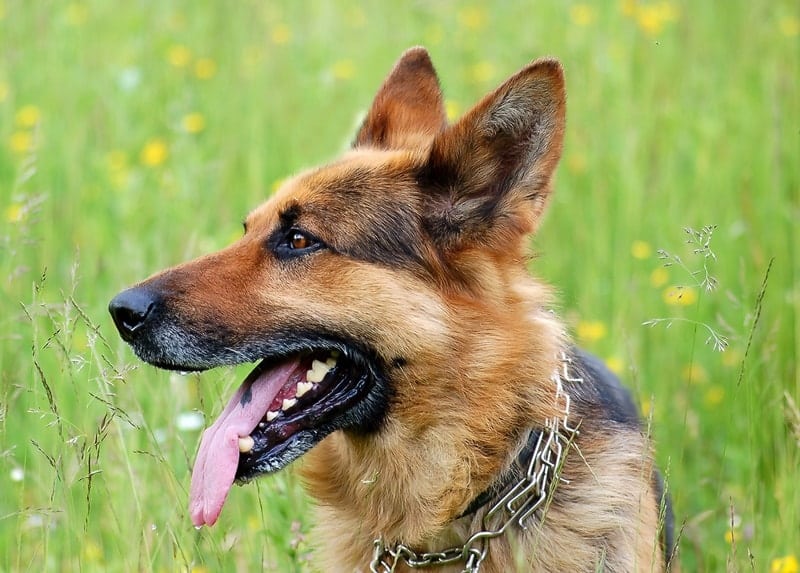
| Origin: | Germany |
| Lifespan: | 12–14 years |
| Height: | 22–26 inches |
German Shepherds are a pretty popular breed. As their name suggests, these dogs are shepherds, which means that they were originally developed to herd livestock. This breed still possesses many of these characteristics today, including their athleticism and obedience. Since then, these dogs have been utilized as sentries, personal protection dogs, and police dogs. Many people are drawn to them due to their guarding instincts.
However, these dogs can also be a lot to handle. They’re expectedly aloof towards strangers and require tons of socialization to prevent aggression. It’s important that German Shepherds learn that not everyone is a threat.
German Shepherds have many different physical characteristics depending on what line they come from. German Shepherds bred for work tend to have a more varied appearance than those bred for the show ring. This often includes spotting on their tongues.

Final Thoughts
Many dog breeds can have spotted tongues, but most of them have a plain pink tongue. Finding an individual with a spotted tongue may not be unusual, but it absolutely wouldn’t be the “norm.” Most breeders don’t aim for spotted tongues, so this trait tends to be more random than others.
Of course, you shouldn’t just purchase a dog breed because of their tongue color. Their temperament and how well they fit into your family matters far more.
Featured Image Credit: MartinHolzer, Pixabay
